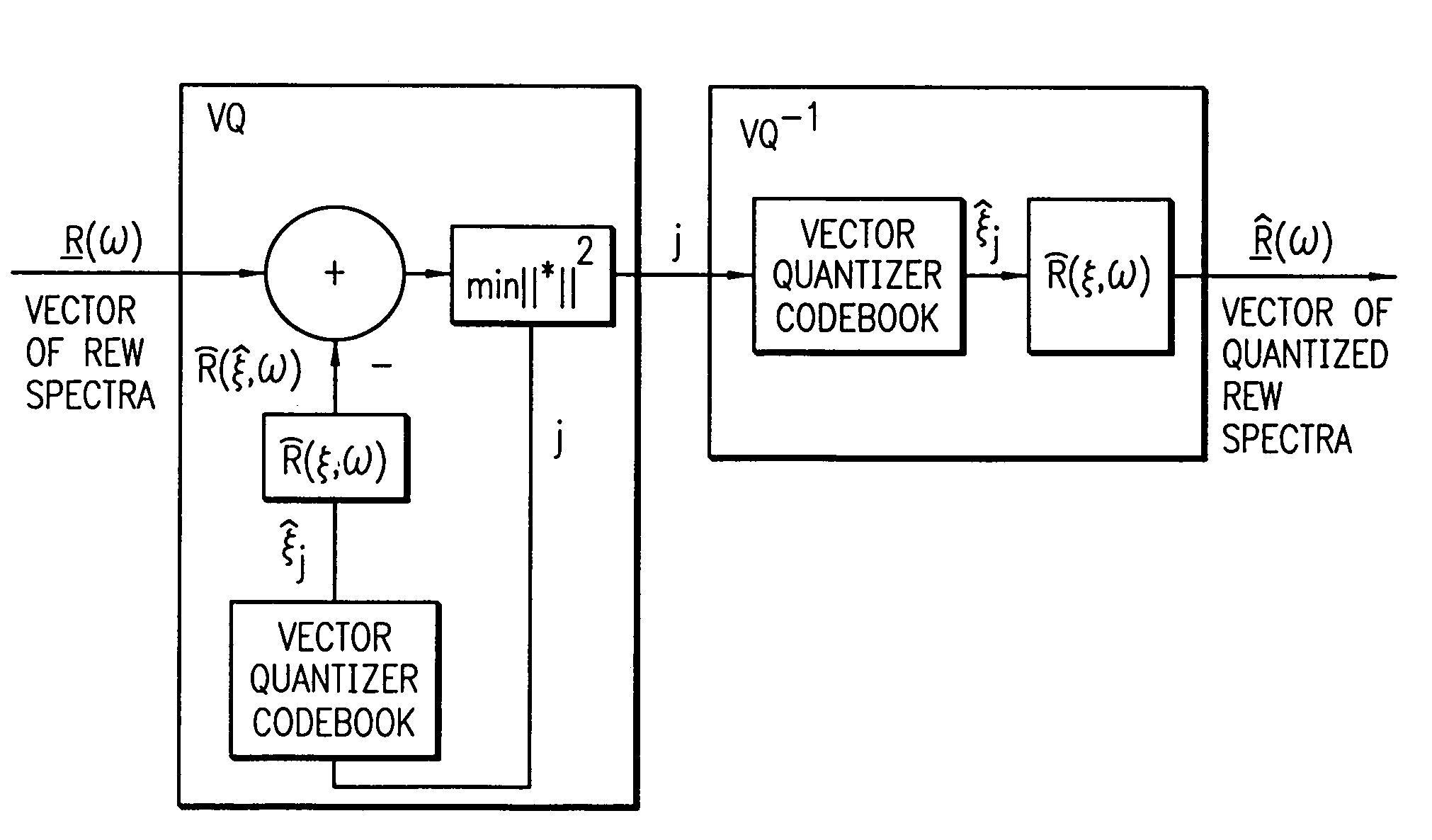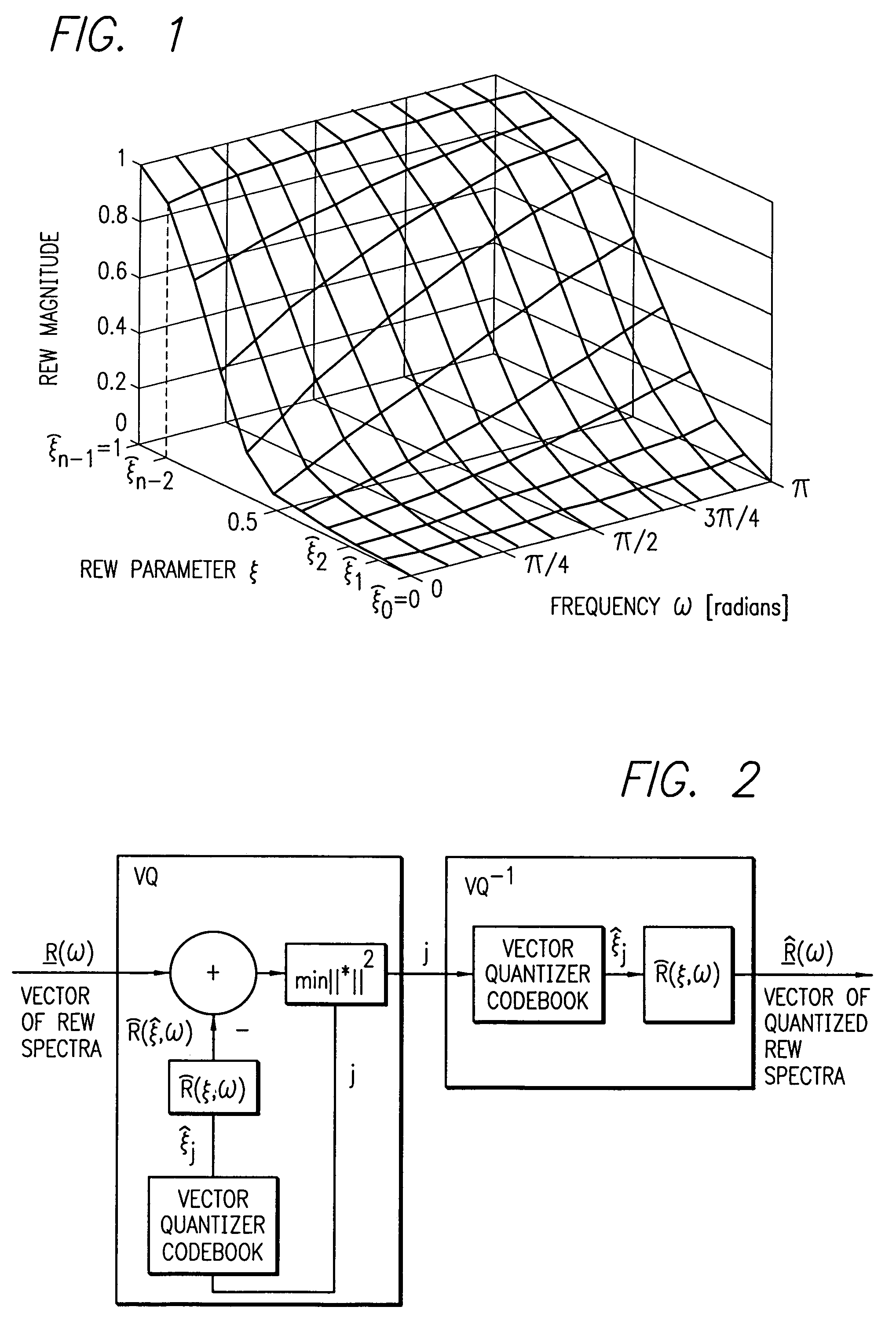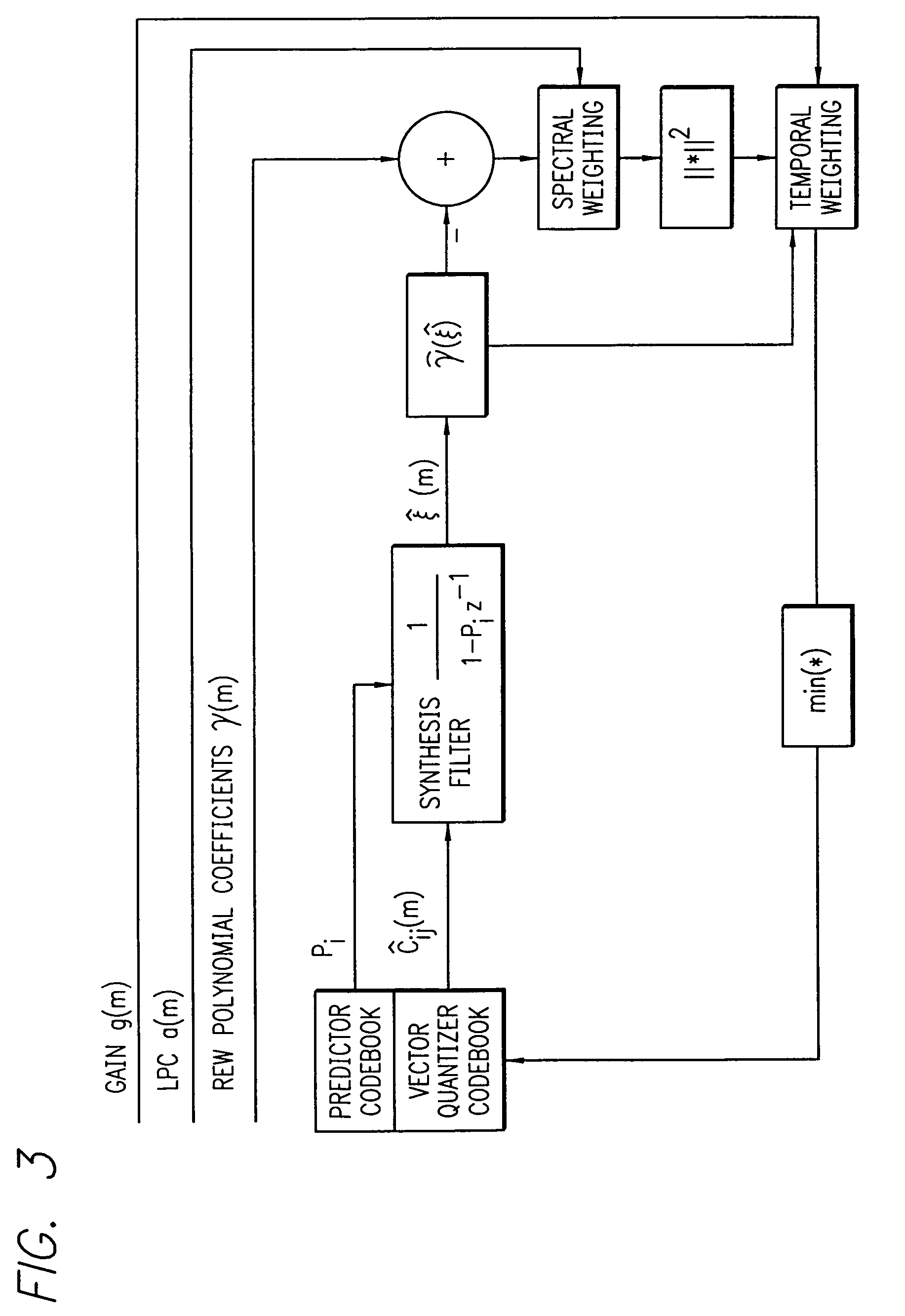REW parametric vector quantization and dual-predictive SEW vector quantization for waveform interpolative coding
a waveform interpolation and waveform technology, applied in the field of vector quantization (vq) in speech coding, can solve the problems of lack of robustness of speech parameter estimation, inability to achieve toll quality, and inability to model non-stationary speech segments, etc., to improve coding efficiency, improve the performance of wi coder, and improve the effect of coding efficiency
- Summary
- Abstract
- Description
- Claims
- Application Information
AI Technical Summary
Benefits of technology
Problems solved by technology
Method used
Image
Examples
Embodiment Construction
[0026]In very low bit rate WI coding, the relation between the SEW and the REW magnitudes was exploited by computing the magnitude of one as the unity complement of the other; see W. B. Kleijn, and J. Haagen, (1995), “A Speech Coder Based on Decomposition of Characteristic Waveforms”, IEEE ICASSP'95, pp. 508-511; W. B. Kleijn, and J. Haagen, (1995), “Waveform Interpolation for Coding and Synthesis”, in Speech Coding Synthesis by W B. Kleijn and K. K. Paliwal, Elsevier Science B. V., Chapter 5, pp. 175-207; I. S. Burnett, and G. J. Bradley, (1995), “New Techniques for Multi-Prototype Waveform Coding at 2.84 kb / s”, IEEE ICASSP'95, pp. 261-263, 1995; I. S. Burnett, and G. J. Bradley, (1995), “Low Complexity Decomposition and Coding of Prototype Waveforms”, IEEE Workshop on Speech Coding for Telecommunications, pp. 23-24; I. S. Burnett, and D. H. Pham, (1997), “Multi-Prototype Waveform Coding using Frame-by-Frame Analysis-by-Synthesis”, IEEE ICASSP'97, pp. 1567-1570; W. B. Kleijn, Y. Sh...
PUM
 Login to View More
Login to View More Abstract
Description
Claims
Application Information
 Login to View More
Login to View More - R&D
- Intellectual Property
- Life Sciences
- Materials
- Tech Scout
- Unparalleled Data Quality
- Higher Quality Content
- 60% Fewer Hallucinations
Browse by: Latest US Patents, China's latest patents, Technical Efficacy Thesaurus, Application Domain, Technology Topic, Popular Technical Reports.
© 2025 PatSnap. All rights reserved.Legal|Privacy policy|Modern Slavery Act Transparency Statement|Sitemap|About US| Contact US: help@patsnap.com



